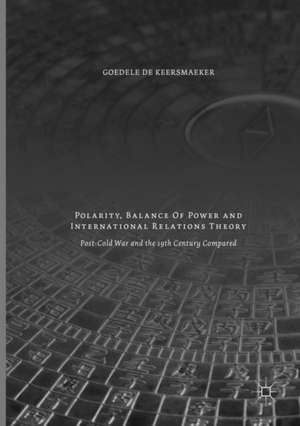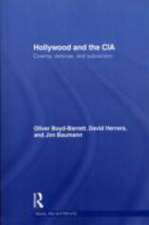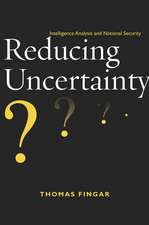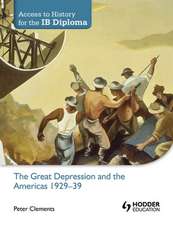Polarity, Balance of Power and International Relations Theory: Post-Cold War and the 19th Century Compared
Autor Goedele De Keersmaekeren Limba Engleză Paperback – 4 iul 2018
| Toate formatele și edițiile | Preț | Express |
|---|---|---|
| Paperback (1) | 523.72 lei 6-8 săpt. | |
| Springer International Publishing – 4 iul 2018 | 523.72 lei 6-8 săpt. | |
| Hardback (1) | 699.77 lei 6-8 săpt. | |
| Springer International Publishing – 15 dec 2016 | 699.77 lei 6-8 săpt. |
Preț: 523.72 lei
Preț vechi: 616.14 lei
-15% Nou
100.21€ • 109.20$ • 84.44£
Carte tipărită la comandă
Livrare economică 23 aprilie-07 mai
Specificații
ISBN-10: 331982628X
Pagini: 247
Ilustrații: XI, 247 p.
Dimensiuni: 148 x 210 mm
Greutate: 0.31 kg
Ediția:Softcover reprint of the original 1st ed. 2017
Editura: Springer International Publishing
Colecția Palgrave Macmillan
Locul publicării:Cham, Switzerland
Cuprins
Notă biografică
Textul de pe ultima copertă
Caracteristici
Descriere
This book discusses the rise of polarity as a key concept in International Relations Theory. Since the end of the Cold War, until at least the end of 2010, there has been a wide consensus shared by American academics, political commentators and policy makers: the world was unipolar and would remain so for some time. By contrast, outside the US, a multipolar interpretation prevailed. This volume explores this contradiction and questions the Neorealist claim that polarity is the central structuring element of the international system. Here, the author analyses different historic eras through a polarity lens, compares the way polarity is used in the French and US public discourses, and through careful examination, reaches the conclusion that polarity terminology as a theoretical concept is highly influenced by the Cold War context in which it emerged. This volume is an important resource for students and researchers with a critical approach to Neorealism, and to those interested in the defining shifts the world went through during the last twenty five years.






















